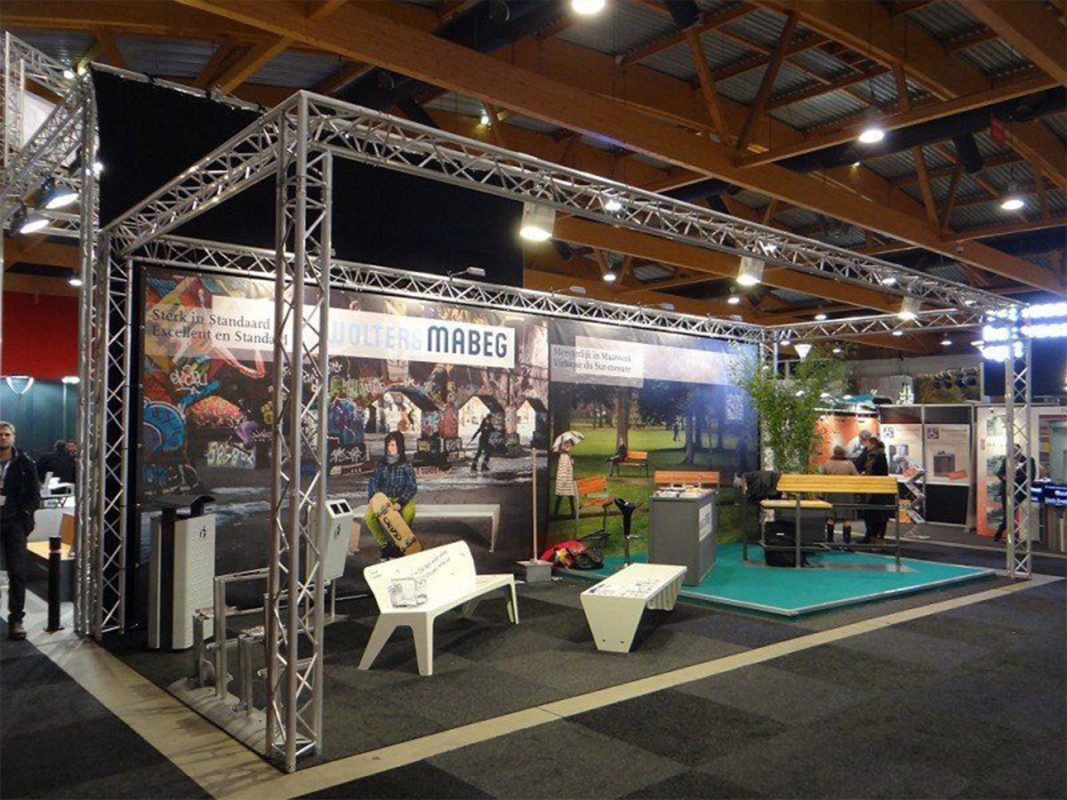Understanding the Basics of an Exhibition Truss System
Before diving into safety protocols, it’s important to understand what an Exhibition Truss System actually is. These systems are modular structures made typically from lightweight aluminum or steel. Their design includes triangular or square segments connected together to create a framework that supports banners, lighting equipment, monitors, and more.
Due to their flexibility and reusability, truss systems are popular among brands that attend multiple exhibitions per year. They can be customized for floor spaces of all sizes and adapted for both simple and complex booth layouts.
Why Proper Installation of an Exhibition Truss System Is Crucial
A properly installed Exhibition Truss System ensures structural stability, reduces accident risks, and meets local safety codes. Trusses are often responsible for supporting heavy objects overhead, such as lighting rigs or plasma screens. One loose connection or weak joint could lead to dangerous consequences.
Whether you’re doing a DIY setup or hiring professionals, prioritizing safety isn’t optional—it’s essential.
Pre-Installation Checks for Your Exhibition Truss System
Before any physical assembly begins, perform a thorough pre-installation check of your Exhibition Truss System components. Here’s what you should inspect:
- Visual Damage: Look for cracks, bends, or signs of wear on all segments.
- Connector Integrity: Make sure all bolts, screws, and locking pins are intact and functional.
- Weight Ratings: Verify that the truss you’re using can support the weight of equipment being mounted.
Checking these elements beforehand can save time and prevent safety issues during the actual installation process.
Exhibition Truss System Assembly: Tools, Manpower, and Guidelines
Installing an Exhibition Truss System isn’t a solo job. Even with smaller setups, it’s best to have a team of at least two or three trained individuals.
Recommended tools and equipment:
- Torque wrenches or Allen keys (depending on bolt types)
- Safety helmets and gloves
- Ladders or scissor lifts
- Level and tape measure
- Safety harnesses for elevated installations
Always refer to the manufacturer’s manual, as different truss systems may require unique installation methods. Each connector type has torque specifications that must be followed for safe installation.
Weight Distribution and Load-Bearing Guidelines for Exhibition Truss System
One of the most overlooked safety aspects is uneven weight distribution. When hanging items like TVs, signage, or lights, the Exhibition Truss System must be balanced. Uneven load can cause stress on specific segments, increasing the risk of collapse.
Tips for load management:
- Use counterweights or additional support structures when necessary.
- Avoid exceeding the load capacity of any single truss beam.
- Distribute equipment weight across multiple truss sections evenly.
Professional rigging consultations are recommended for large-scale truss builds or complex suspended elements.
Securing Overhead Elements on Your Exhibition Truss System
If your design includes hanging components above attendee walkways, then extra caution is necessary. Using a Exhibition Truss System for overhead elements requires reliable safety cables, clamps, and secure mounting hardware.
Each item suspended from the truss should have:
- A primary fastener (e.g., clamps or brackets)
- A secondary safety tether in case the primary fails
- Compliance with venue-specific rigging safety codes
Venues may also require inspection by certified riggers before granting final approval for overhead displays.
Fire and Electrical Safety Around the Exhibition Truss System
Since truss systems often integrate lighting and digital screens, fire and electrical safety are important considerations. Poor wiring can turn a booth into a fire hazard quickly.
Here’s how to stay safe:
- Use only certified, high-quality power strips and extension cords.
- Avoid overloading electrical circuits.
- Route cables neatly and out of walkways to prevent tripping.
- Keep all electrical components away from flammable materials like fabric drapes or banners.
Additionally, venue policies often mandate that all electrical systems pass inspection prior to event commencement.
Disassembly and Post-Event Safety for the Exhibition Truss System
Just as setup needs to be done safely, disassembling your Exhibition Truss System requires attention to detail. Removing elements too quickly or without proper tools can lead to injuries or damaged equipment.
Safe disassembly tips:
- Remove all mounted objects before dismantling the framework.
- Lower elevated truss elements slowly and evenly.
- Store all parts properly to avoid damage or warping.
A damaged truss component reused unknowingly at the next event can result in serious hazards. Conduct a thorough post-event inspection before packing everything away.
Training and Certification for Exhibition Truss System Installation
Not every truss installation needs a licensed engineer, but having trained staff involved can prevent costly mistakes. Some companies offer specific training or certifications for safe Exhibition Truss System assembly and rigging.
Hiring certified installers may even be a requirement by high-profile venues, especially for large, suspended structures. Even for simpler setups, trained personnel offer peace of mind and faster assembly.
Venue Regulations and Compliance for Exhibition Truss System Installations
Each exhibition venue comes with its own safety regulations, and it’s critical to understand them in advance. Some locations may have strict height limits, weight allowances, and emergency exit visibility requirements that influence how you use your Exhibition Truss System.
Before your event:
- Review venue installation guidelines
- Submit any structural drawings or rigging plans for approval
- Plan for on-site inspections if required
Failing to comply with local codes could result in fines or forced booth modifications at the last minute.
Choosing the Right Partner for Your Exhibition Truss System
If safety isn’t your strong suit, working with a reputable truss provider can make all the difference. Look for companies that not only supply the structure but also offer consultation, delivery, setup, and safety certification.
For reliable service and peace of mind, consider a trusted Exhibition Truss System provider who prioritizes structural integrity and customer safety.
Final Thoughts: Safety as the Backbone of Success
In the hustle of planning a trade show, safety can sometimes take a backseat to design or budget. But the reality is, a safe Exhibition Truss System is the foundation of any successful booth experience. When your structure is sound, your lighting works perfectly, and your visuals shine—everything else falls into place.
Investing in proper equipment, training, and installation practices not only keeps your team and attendees safe but also boosts your credibility and professionalism. Safety isn’t just a requirement—it’s a competitive advantage.







